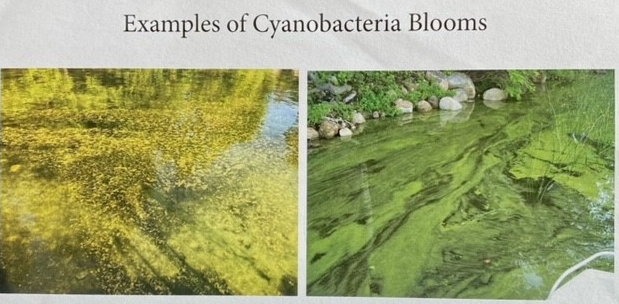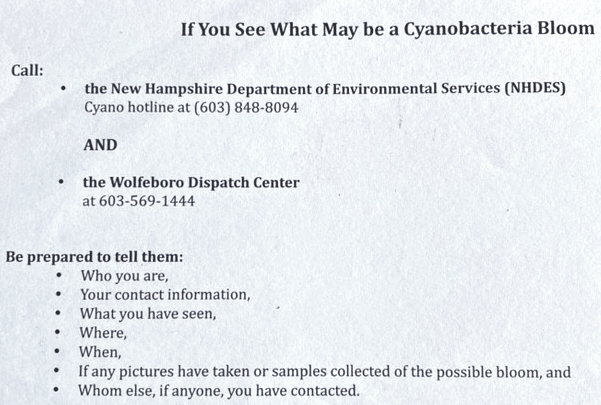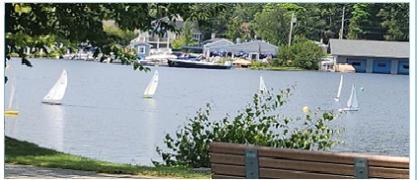Cyanobacteria

Cyanobacteria (formerly known as blue-green algae) are photosynthetic bacteria that utilize the sun’s energy but also behave as bacteria. Cyanobacteria are some of the earliest inhabitants of our waters and terrestrial and aquatic environments around the world. So, they naturally occur in all our lakes, though often in relatively low numbers in New Hampshire.
Many species of cyanobacteria grow in colonies or large concentrations to form surface water “BLOOMS.” Blooms are usually blue-green in color and consist of thousands of cells. Research indicates that cyanobacteria abundance increases as lake nutrients increase, however each type of cyanobacteria has its own unique requirements for growth.
While cyanobacteria blooms are considered unsightly and aesthetically displeasing, there are more serious concerns associated with high concentrations (BLOOMS) of cyanobacteria. Many types of cyanobacteria produce toxins (toxic chemicals also called cyanotoxins) and have been reported to adversely affect humans, pets, and livestock globally. According to the World Health Organization (WHO), toxic cyanobacteria are found worldwide in both inland and coastal waters. While most human health impacts have resulted from ingestion (or use of contaminated water in kidney dialysis), cases of illnesses have also been attributed to swimming in cyanobacteria infested waters.

Exposure to toxic cyanobacteria scums may cause symptoms, such as nausea, vomiting, diarrhea, mild fever, skin rashes, eye and nose irritations, numbness, and general malaise. Some studies suggest cyanobacteria may be linked to serious chronic illness. [NHDES Environmental Fact Sheet}
More Information:
2019 Assessment Summary Report
2019 Assessment Summary Report Executive Summary
Cyanobacteria in Wolfeboro Waters
How Wolfeboro Waters Assesses Cyanobacteria
What Promotes Growth of Cyanobacteria?
Identifying Cyanobacteria Blooms
NHDES Cyanobacteria Advisories
| Attachment | Size |
|---|---|
| 21.43 MB |










